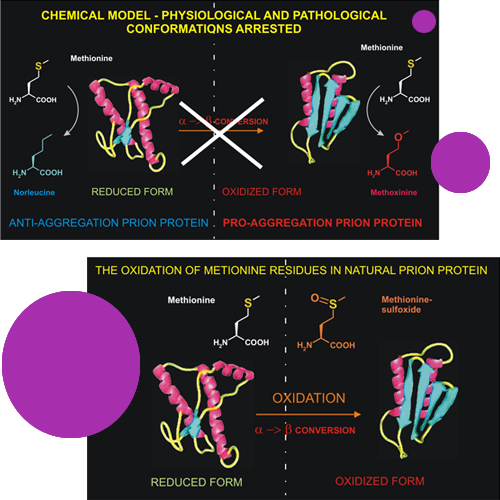Design of anti- and pro-aggregation variants to assess the effects of methionine oxidation in human prion protein
28-Apr-2009
Prion disease is characterized by the α→β structural conversion of the cellular prion protein (PrPC) into the misfolded and aggregated “scrapie” (PrPSc) isoform. It has been speculated that methionine (Met) oxidation in PrPC may have a special role in this process, but has not been detailed and assigned individually to the 9 Met residues of full-length, recombinant human PrPC [rhPrPC(23-231)]. To better understand this oxidative event in PrP aggregation, the extent of periodate-induced Met oxidation was monitored by electrospray ionization-MS and correlated with aggregation propensity. Also, the Met residues were replaced with isosteric and chemically stable, nonoxidizable analogs, i.e., with the more hydrophobic norleucine (Nle) and the highly hydrophilic methoxinine (Mox). The Nle-rhPrPC variant is an α-helix rich protein (like Met-rhPrPC) resistant to oxidation that lacks the in vitro aggregation properties of the parent protein. Conversely, the Mox-rhPrPC variant is a β-sheet rich protein that features strong proaggregation behavior. In contrast to the parent Met-rhPrPC, the Nle/Mox-containing variants are not sensitive to periodate-induced in vitro aggregation. The experimental results fully support a direct correlation of the α→β secondary structure conversion in rhPrPC with the conformational preferences of Met/Nle/Mox residues. Accordingly, sporadic prion and other neurodegenerative diseases, as well as various aging processes, might also be caused by oxidative stress leading to Met oxidation.











